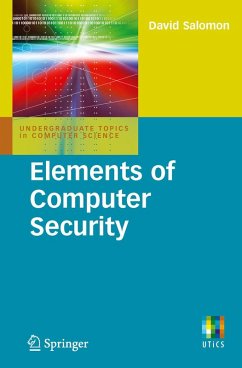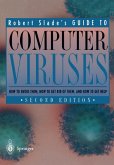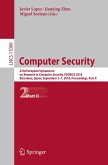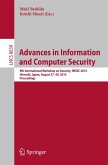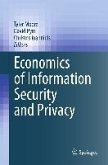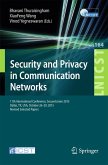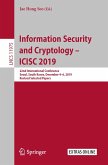As our society grows ever more reliant on computers, so it also becomes more vulnerable to computer crime. Cyber attacks have been plaguing computer users since the 1980s, and computer security experts are predicting that smart telephones and other mobile devices will also become the targets of cyber security threats in the future.
Developed from the author's highly successful Springer text, Foundations of Computer Security, this accessible, broad-ranging, and versatile textbook has been fully updated and enhanced with resources for students, instructors, and even those motivated to self-study on this topic.
Topics and features:
Clearly and engagingly written, this concise textbook is an ideal resource for undergraduate classes on computer security, as well as a solid reference for anyone needing to expand their security knowledge. The book is mostly non-mathematical, and is suitable for anyone familiar with the basic concepts of computers and computations.
David Salomon is a professor emeritus of Computer Science at California State University, Northridge. He has authored numerous articles and Springer books, including Handbook of Data Compression, A Concise Introduction to Data Compression, Variable-length Codes for Data Compression, Transformations and Projections in Computer Graphics, Curves and Surfaces for Computer Graphics, Coding for Data and Computer Communications, Data Privacy and Security, and A Guide to Data Compression Methods.
Developed from the author's highly successful Springer text, Foundations of Computer Security, this accessible, broad-ranging, and versatile textbook has been fully updated and enhanced with resources for students, instructors, and even those motivated to self-study on this topic.
Topics and features:
- Examines the physical security of computer hardware, networks, and digital data
- Introduces the different forms of rogue software (or malware), discusses methods for preventing and defending against them, and thoroughly describes a selection of viruses, worms and Trojans in detail
- Provides numerous exercises and examples throughout the text, in addition to a Glossary of terms used in the book
- Investigates the important threats to network security, and explores the timely subjects of authentication, spyware, and identity theft
- Discusses key issues about privacy and trust in the online world, including children's privacy and safety
- Includes helpful appendices which discuss the definition, meaning, and history of the term "hacker"; introduce the language of "l33t Speak;" and provide a detailed virus timeline
- Supplies additional resources at the associated website: http://www.DavidSalomon.name/, including an introduction to cryptography, and answers to the exercises
Clearly and engagingly written, this concise textbook is an ideal resource for undergraduate classes on computer security, as well as a solid reference for anyone needing to expand their security knowledge. The book is mostly non-mathematical, and is suitable for anyone familiar with the basic concepts of computers and computations.
David Salomon is a professor emeritus of Computer Science at California State University, Northridge. He has authored numerous articles and Springer books, including Handbook of Data Compression, A Concise Introduction to Data Compression, Variable-length Codes for Data Compression, Transformations and Projections in Computer Graphics, Curves and Surfaces for Computer Graphics, Coding for Data and Computer Communications, Data Privacy and Security, and A Guide to Data Compression Methods.
Dieser Download kann aus rechtlichen Gründen nur mit Rechnungsadresse in A, B, BG, CY, CZ, D, DK, EW, E, FIN, F, GR, HR, H, IRL, I, LT, L, LR, M, NL, PL, P, R, S, SLO, SK ausgeliefert werden.
From the reviews:
"Salomon ... presents a detailed overview of the history of malicious code and the creators that spawned it. This is an excellent reference for those new to security practices, from home users to students, it provides guidance on how to secure a computer system and understand the risks to the system. ... This excellent, readable, and enjoyable work should be on the shelves of all personal computer users. Summing Up: Highly recommended. Lower-division undergraduates and general readers." (T. D. Richardson, Choice, Vol. 48 (7), March, 2011)
"Salomon ... presents a detailed overview of the history of malicious code and the creators that spawned it. This is an excellent reference for those new to security practices, from home users to students, it provides guidance on how to secure a computer system and understand the risks to the system. ... This excellent, readable, and enjoyable work should be on the shelves of all personal computer users. Summing Up: Highly recommended. Lower-division undergraduates and general readers." (T. D. Richardson, Choice, Vol. 48 (7), March, 2011)

